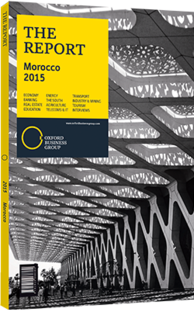Nasim Khan, Vice-President for Africa, First Solar: Interview

Interview: Nasim Khan
How will Morocco finance its energy projects?
NASIM KHAN: Speaking in general terms, Morocco already has a proven track record of leveraging international and local financial resources. In fact, the kingdom is North Africa’s pioneer in terms of establishing a sustainable independent power production programme. I expect that the combination of its strong track record and socio-economic stability will make Morocco an attractive proposition for lenders looking to participate in its renewable energy programme.
What is the potential for solar energy in Morocco?
KHAN: Morocco has limited hydrocarbons resources at its disposal, and the kingdom’s leadership was among the first in the region to recognise the need to harness the potential for renewable energy. The country is working towards having renewables account for as much as 42% of installed capacity by 2020; this translates to an estimated 2000 MW of solar energy capacity. In my view, this ambitious target is achievable if the government, in collaboration with the private sector, succeeds in establishing a suitable regulatory framework to develop its rapidly evolving solar energy market.
How does solar energy stack up in terms of cost?
KHAN: Photovoltaic (PV) is cost competitive today – we are in the midst of a global energy transition and solar is no longer a subsidy-driven option. In fact, the view that solar is more expensive than traditional fuels is outdated. On a levelised cost of electricity (LCOE) basis, solar PV is proven to be cost competitive with most conventional power generation sources.
How competitive is Morocco’s local solar industry?
KHAN: First, we have to address the broader subject of manufacturing. It needs to be understood that PV modules are simply one component of a solar power plant. In terms of LCOE, modules account for around 25% of the cost of a plant, and establishing module manufacturing facilities is a capital-intensive exercise that needs to be backed by long-term demand. Meanwhile, the balance of system, which includes steel structures, cabling and electrical components, represents an estimated 26% of a plant’s LCOE. I believe this is an area where industry can play an immediate role and reap a range of benefits from the country’s solar programme.
What is the situation with the regulatory framework?
KHAN: The Moroccan government has rightly been praised for its efforts to establish a robust legal and regulatory framework to govern the development of the country’s renewable energy sector. Existing legislation represents an important first step towards liberalising power generation and enabling sustainable growth in renewables. However, efforts to fully leverage the country’s early adopter advantage are being hampered by undefined zones for projects with more than 2 MW in capacity and the absence of a regulatory framework governing access to the medium-voltage grid. Nonetheless, I am confident that once the government identifies sites for the development of utility-scale solar PV projects and enables grid access, the market will be on the way to reaching its potential.
How can the government further include private foreign investors in its solar energy plan?
KHAN: Direct subsidies are not the best approach for creating sustainable growth in PV solar energy, especially since, all things being equal, solar PV is fully capable of competing with conventional power generation on a LCOE basis for a net energy importing country like Morocco. However, the key is to foster a level playing field, which often makes it necessary for governments – in Morocco and around the world – to remove subsidies that support conventional power generation. Indirect incentives, such as tax credits, should also be considered, as they will further improve PV solar’s cost competitiveness. The priority for the country should be building upon existing achievements and continuing its determined push towards long-term energy security.
You have reached the limit of premium articles you can view for free.
Choose from the options below to purchase print or digital editions of our Reports. You can also purchase a website subscription giving you unlimited access to all of our Reports online for 12 months.
If you have already purchased this Report or have a website subscription, please login to continue.

